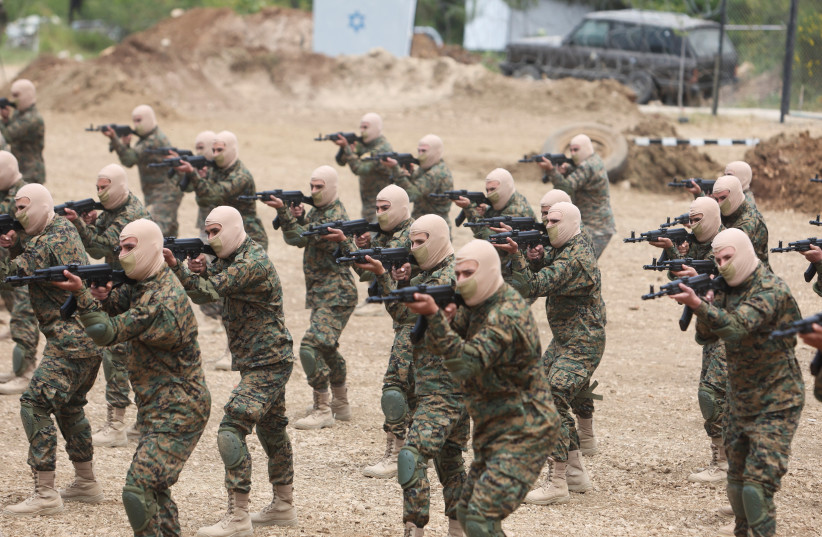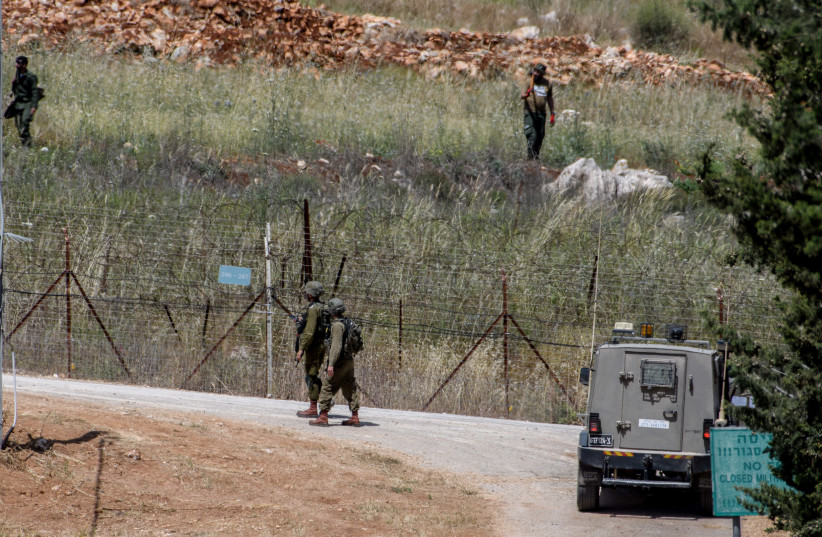Former IDF intelligence chief and current INSS managing director Tamir Hayman told The Jerusalem Post on Sunday that the IDF should use force if Hezbollah does not withdraw from its new outposts in Israeli territory within a matter of several weeks.
Speaking to Hayman following INSS having issued a new position paper on the matter, it was clarified that though the think tank did not want to give an exact deadline suggestion – preferring to leave the IDF flexibility – he did believe that waiting months would be too long.
Most importantly, the former IDF intelligence chief and the think tank believe that the long-term threat presented by allowing Hezbollah to remain in Israeli territory outweighs the risk of a larger conflict with Hezbollah, which could come out of removing their outpost by force.
At the same time, other sources within the IDF suggested that the time available for the diplomatic process might be longer.
According to Hayman and INSS, a series of incidents – Hezbollah’s attempted drone attack on the Karish maritime gas fields, a terror attack at Megiddo, and dozens of rockets fired over the Passover holiday prove that Hezbollah is underestimating Israel’s strength.

Whether because of Israel’s deal with Lebanon and Hezbollah regarding splitting the gas field maritime territory or because of ongoing threats by IDF reservists to go on strike to protest the government’s judicial overhaul policy, Hayman and INSS say that the terror group’s chief, Hassan Nasrallah, has miscalculated and believes this is a moment when he can bully Jerusalem.
If Nasrallah is not put in his place, he will continue to take greater and more dangerous risks against Israel, said Hayman and INSS.
If the INSS position paper’s views are accepted by the IDF, it would reflect a very recent shift in the military’s thinking on the issue.
Even only a couple of weeks ago, when the existence of the Hezbollah position was first reported, the Post understood that there were top IDF officials who might be ready to give the diplomatic process months to resolve itself before using force.
At that point, the IDF was significantly downplaying the entire incident, presenting no danger, and therefore, no rush to be resolved.
Crossing the Blue Line
However, on Saturday, Mohammad Raad, head of the Loyalty to the Resistance Bloc (Hezbollah’s political wing), announced that Hezbollah would not be removing two tents placed on the Israeli side of the Blue Line, according to Lebanese media.
“Israel has been talking a lot about the two tents on the border for a month, and they consider that they have been placed at an advanced point on the Blue Line, according to their interpretation. Israel requests that these two tents be removed and that Israel prefers that the resistance remove them, because if the Israeli enemy wants that, war will occur and Israel does not want it,” said Raad at a memorial ceremony held in the town of Marwaniya.
Previously, Israel had asked the UN to apply pressure on Lebanon and also Hezbollah to remove the tents.
According to the request, “Unless Hezbollah evacuates the two sites, the Israeli army will itself take the initiative to evacuate them by force, after two weeks of mediation by European capitals in contact with Hezbollah in Lebanon.”
Meanwhile, also on Sunday, IDF troops used dispersal means to move a group of Lebanese people, who were throwing rocks at the soldiers, away from engineering work it was performing on the border between the two countries in the Manra area.
Lebanese media claimed that the IDF had opened fire on the Lebanese group, and did not mention they were throwing rocks.

On June 21, sources revealed that around 10 Hezbollah fighters had infiltrated Israel and set up a small armed military position a few meters into Israeli territory sometime in May.
The IDF said at the time, “the matter is known and being dealt with together with the relevant authorities.”
The area where the Hezbollah outpost has been set up is along the 300 Blue Line, in the disputed Har Dov area, with the sub-area sometimes referred to as the Ramtah Lookout Point.
The area where the Hezbollah outpost has been set up is not considered a security threat because it is not close to any Israeli residential areas and is surrounded by IDF forces that are close by.
The IDF did not immediately detect the incursion before the outpost was set up, but detected it shortly after and attempted some light dispersal means to remove the Hezbollah group, which were not successful.
The IDF has declined to provide the distance between the Hezbollah outpost and the nearest IDF unit, though there was a promise to do so on June 21. In the meantime, the distance has been said to be relatively small.
The government and the IDF had calculated that making the incursion a big deal publicly would make it harder to convince Hezbollah to leave on a cooperative basis.
It seems that the IDF would not even have informed the public of the incursion had the news not come out independently through a Kan report earlier in June.
In fact, this is not the only incident in which Hezbollah has set up a small outpost temporarily slightly into Israeli territory.
Minor incidents building to something major
Part of the complication is that there have been dozens of low-grade incidents over the last year or two in which the IDF or Hezbollah and Lebanon have accused the other of some small violation of the Blue Line.
A complication regarding the Blue Line is that there is no clear geographic boundary at the Blue Line established by the UN following Israel’s withdrawal from Southern Lebanon in 2000.
Rather, over time the IDF has been establishing a series of fences and other obstacles to create a defensible border that runs as close as possible to the coordinates set by the UN.
However, in instances where the UN coordinates created an impractical defensive position in the field, the IDF has sometimes tried to make minor alterations in the terrain to make its position defensible.
In this broader context of regular tensions with Hezbollah, the IDF, and the government appear to want to resolve the issue without leading to a major escalation, given that Hezbollah possesses 150,000 rockets and an estimated few hundred or more precision rockets.
Still, the IDF is committed to removing the outpost, even eventually using force if the diplomatic route does not succeed.
This incident is viewed as a much lower-level provocation than a deadly incident in March when a Hezbollah terrorist not only crossed the border but traveled more than 80 km. deep into Israel to Megiddo where he detonated a bomb, seriously wounding an Israeli.
Jerusalem Post Staff contributed to this report.
